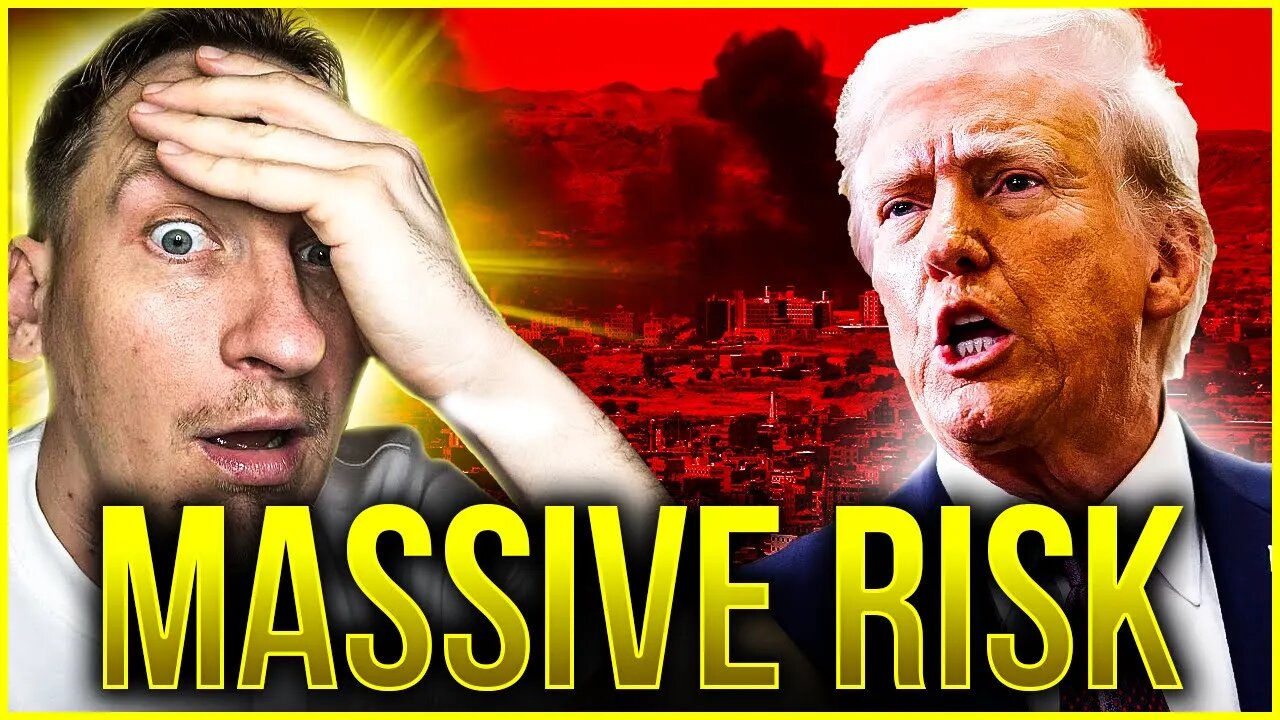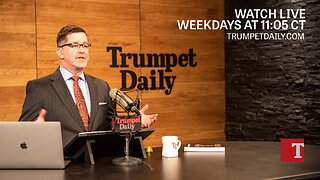Premium Only Content

Trump Makes Even More AGGRESSIVE Military Move And Hints At HUGE Maneuver
Get the shirts and meet like minded people - https://thebestpoliticalshirts.com/
Trump Makes Even More AGGRESSIVE Military Move And Hints At HUGE Maneuver
Highlights
⚔️ Major Military Response: The U.S. conducted a significant military assault against Houthi forces in Yemen, marking one of the largest military actions of Trump’s presidency.
🔴 Civilian Impact: Reports indicate civilian casualties totaling 14, showcasing the humanitarian cost of the military campaign.
🚨 Campaign Promises Broken: Trump’s current military actions starkly contrast his previous promises to prioritize diplomacy over military engagement.
🌍 Iran’s Role: The speaker argues that Iran’s influence continues to grow as a response to U.S. military interventions in the Middle East.
💡 U.S. Interests vs. Global Dynamics: The military actions are framed within a larger discussion about the U.S. intention to protect trade routes that may benefit China, raising questions about national priorities.
🤔 Call for Diplomacy: The speaker advocates for diplomatic resolutions rather than military aggression, urging for a reevaluation of U.S. foreign policy strategies.
🔍 Political Consequences: Current military actions could have lasting repercussions for U.S. foreign relations and Trump’s political standing domestically and abroad.
Key Insights
🌊 Aggressive Military Strategy as a Policy Shift: Trump’s latest military actions signal a departure from his campaign pledges to reduce U.S. military presence abroad. The chosen strategy raises questions about the consistency of his foreign policy approach and the likelihood of increasing U.S. entanglement in foreign conflicts.
🕵️ Humanitarian Crisis in Yemen: Yemen faces severe humanitarian issues, including widespread famine affecting two-thirds of its population. The military engagement by the U.S. is likely to exacerbate existing difficulties for civilians, illustrating the stark contrast between U.S. foreign policy objectives and the on-the-ground realities faced by everyday Yemenis.
📉 Iran’s Proxy Dynamics: The discussion highlights Iran’s role as a key player influencing the Houthi forces, raising concerns about U.S. perceptions of Iran as a state sponsor of terror. This analysis emphasizes how proxy conflicts complicate the understanding of regional terrorist threats and the extent to which they can truly be curtailed by military action.
🧩 Geopolitical Aims vs. National Security: The video suggests that U.S. military actions may be more about securing geopolitical interests—particularly trade routes—rather than addressing the immediate threats posed by actors like the Houthis. This opens a discussion on the motivations behind U.S. interventions and their potential implications for international relations.
📣 Media Narratives and Public Perception: The focus on Iran as a primary threat has been echoed in various media outlet narratives, leading to a potential glamorization of military actions without adequately addressing the origins of conflicts. This invites a critical look at how public sentiment is shaped by media framing of foreign policy issues.
🤖 The Complications of Intervention: The video posits a recurring theme in American foreign policy—the use of military intervention as a tool of diplomacy, often leading to unintended consequences. The speaker posits an argument for the use of “carrots” in conjunction with “sticks” to achieve peace, suggesting that alternative strategies could yield better outcomes.
💬 The Role of Political Pressure: The incumbent military engagement can be viewed as an effort to reinforce U.S. dominance in the region, but it also opens up debates about the effectiveness of singular strategies. The possibility that Trump could instead leverage political pressure through diplomacy rather than force underscores the complexities of decision-making in high-stakes international relations.
-
 LIVE
LIVE
The Mel K Show
1 hour agoMORNINGS WITH MEL K - The Season Of Treason: America’s Future On the Ropes 8-22-25
746 watching -
 LIVE
LIVE
Flyover Conservatives
11 hours agoUpdate on Tina Peters in Prison - Matt Meck; The Big Shift You Must Make Before It’s Too Late - Clay Clark | FOC Show
361 watching -
 LIVE
LIVE
JuicyJohns
4 hours ago $0.29 earned🟢#1 REBIRTH PLAYER 10.2+ KD🟢
246 watching -
 32:24
32:24
Rethinking the Dollar
44 minutes agoPowell Caves: The MAGA Wealth Effect Begins NOW! | Morning Check-In: Let's Talk...
-
 LIVE
LIVE
The Shannon Joy Show
16 hours ago🔥🔥 Shannon Joy’s Week in Review: August 22, 2025 🔥🔥
587 watching -
 LIVE
LIVE
Trumpet Daily
38 minutes agoTrumpet Daily LIVE | Aug. 22, 2025
376 watching -
 1:01:21
1:01:21
VINCE
3 hours agoThe FBI Is Putting The Deep State On Notice | Episode 109 - 08/22/25
121K152 -
 12:39
12:39
Nikko Ortiz
1 hour agoLive - News, Politics, Podcast And Naaah Im Playin We Chillen
7.53K1 -
 LIVE
LIVE
LFA TV
8 hours agoLFA TV ALL DAY STREAM - FRIDAY 8/22/25
5,731 watching -
 LIVE
LIVE
Caleb Hammer
2 hours agoGirl Math Final Boss | Financial Audit
103 watching